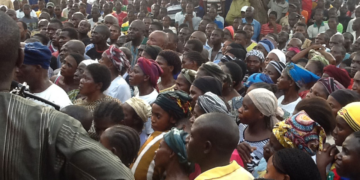The Nigerian Meteorological Agency (NiMet) issued a flood warning on Monday for parts of Gombe State, as well as Adamawa and Taraba, where sustained thunderstorms and heavy rainfalls could lead to flash floods in low-lying, flood-prone areas.
According to NiMet’s weather outlook, the three Northeastern states would experience isolated thunderstorms in the morning, escalating to widespread thunderstorms by afternoon and evening.
The agency noted that the worst impacts were expected in valleys, riverbanks, and settlements lacking proper drainage.
Residents of Gombe State expressed concern, recalling that similar forecasts were made previously, yet flash flooding still took them by surprise due to sluggish drainage, blocked culverts, and unplanned construction.
NiMet specifically warned of flash floods in “flood-prone areas” of the Northeast and advised that motorists take extra precautions by slowing down during rains, keep headlights on, and avoid flooded stretches.
The agency also encouraged households in vulnerable zones to prepare for potential evacuations, protect property, and monitor local waterways.
NiMet urged residents in flood-prone areas to remain alert while advising motorists to drive cautiously during rainfall due to reduced visibility and slippery roads.
With flood disasters in Gombe historically hitting the most vulnerable areas, authorities have been putting pressure on local government councils to improve early warning systems and maintain drainage infrastructure.
Communities along rivers like Gongola and tributaries near Funakaye, Kwami, and Kaltungo LGAs were particularly highlighted to be at risk.
The Executive Secretary of Gombe State Emergency Management Agency (SEMA), Haruna Abdullahi, had earlier told LEADERSHIP that the agency had been on sensitisation campaigns across the 11 local government areas, with local emergency desks in place to respond quickly.
He explained that Gombe in recent months has experienced flooding in Dukku, Billiri, Yamaltu Deba, and Kwami LGAs, displacing families and damaging farmlands.
According to him, ongoing interventions such as dredging waterways and managing drainage systems have significantly reduced the risk of flooding in Gombe metropolis, even as rural LGAs remain exposed.





